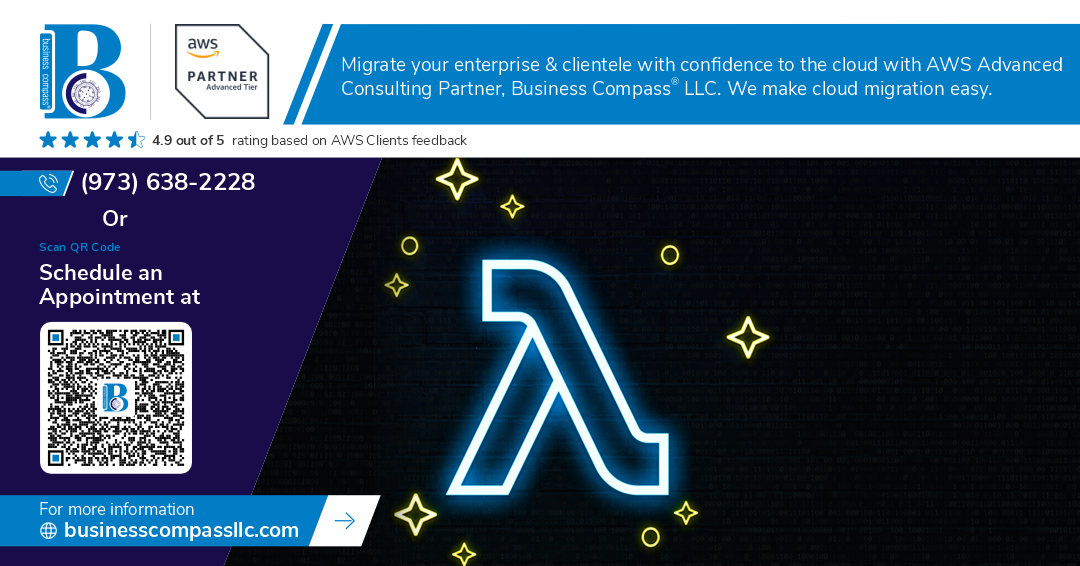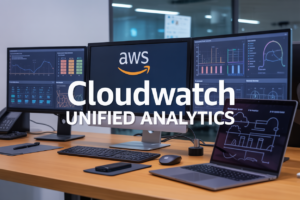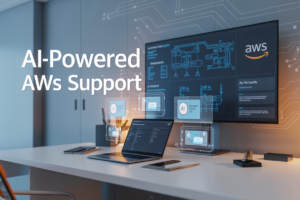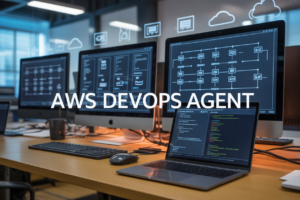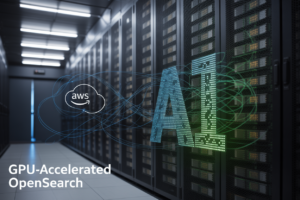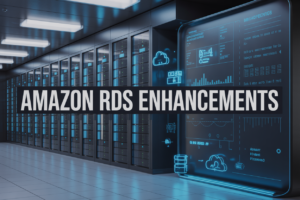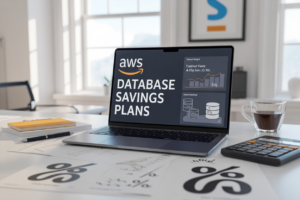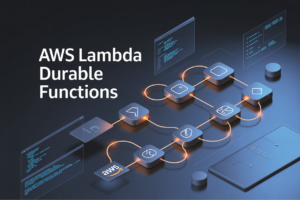Ever tried deploying a data visualization app on AWS Lambda only to hit the dreaded “cannot import matplotlib” error? You’re not alone. I’ve watched dozens of data scientists burn hours trying to make Matplotlib play nice with Lambda’s restrictive environment.
Here’s the truth: getting Matplotlib running on AWS Lambda is entirely possible, but not with the usual pip install approach.
Docker containers are your secret weapon for running Matplotlib on AWS Lambda without the headaches. With the right container setup, you can deploy visualization-heavy applications that scale automatically without managing servers.
But what exactly goes into that Dockerfile? And how do you configure Lambda to use it properly? The solution is simpler than you might think, but involves a few critical steps most tutorials miss.
Understanding the Challenges of Running Matplotlib on AWS Lambda
A. Common Python Library Size Limitations on Lambda
AWS Lambda restricts deployment packages to 250MB unzipped. Matplotlib and its dependencies can easily eat up 150MB+ alone. Add NumPy and Pandas? You’re already bumping against the ceiling before your actual code even enters the picture.
B. Memory and Performance Constraints
Lambda functions start with limited memory (128MB by default) and CPU allocation. Matplotlib operations are resource-hungry beasts. Generating even basic charts can trigger timeouts or memory errors when Lambda struggles to process visualization requests under these tight constraints.
C. Why Docker Solves These Problems
Docker containers let you package Matplotlib with all dependencies pre-installed, sidestepping Lambda’s size limits. You control the execution environment completely, allocate appropriate resources, and benefit from container caching. No more “works on my machine” headaches when deploying visualization code.
Setting Up Your Docker Environment
A. Installing Docker on Your Development Machine
Getting Docker on your machine is super easy. Head to the Docker website, download the installer for your OS (Windows, Mac, or Linux), and follow the prompts. After installation, verify it’s working by running docker --version in your terminal. That’s it – you’re ready to containerize!
B. Docker Basics for Lambda Deployment
Docker containers are perfect for Lambda because they package everything your code needs. Create a Dockerfile that specifies your base image, dependencies, and code. Build it with docker build, tag it for easy reference, and test locally before pushing to AWS ECR. This approach eliminates “works on my machine” problems completely.
C. Creating a Base Python Image
Start with an official Python image like python:3.9-slim. Add your Matplotlib dependencies with a clear RUN statement:
FROM python:3.9-slim
RUN pip install matplotlib numpy pandas
COPY app.py .
CMD ["python", "app.py"]
This slim base keeps your container lightweight while including all visualization essentials.
D. Best Practices for Docker Configuration
Keep your Docker images lean by using multi-stage builds and removing unnecessary packages. Include only the packages you need for Matplotlib to function. Set specific version numbers for dependencies to avoid surprises. Layer your Dockerfile intelligently, putting rarely-changing elements first to maximize build cache benefits.
Building a Custom Docker Image with Matplotlib
Building a Custom Docker Image with Matplotlib
A. Creating an Efficient Dockerfile
Docker is a game-changer for AWS Lambda deployments with Matplotlib. Start with a slim Python base image, add your dependencies, and copy your code. The magic happens when you structure layers efficiently—each instruction creates a cacheable layer that speeds up builds and reduces download times for your Lambda function.
Deploying to AWS Lambda
Deploying to AWS Lambda
A. Setting Up AWS Lambda Function from Container Image
Taking your Docker image to AWS Lambda isn’t rocket science. Push your image to ECR, create a new Lambda function, and select the container image option. Point it to your ECR repository, and boom—you’ve got Matplotlib ready to run serverless.
B. Configuring Lambda Resources for Matplotlib
Matplotlib is hungry for resources. At minimum, set your Lambda memory to 1024MB and timeout to 30 seconds. Your visualizations need breathing room, and skimping here will just cause random failures when generating complex charts.
C. Handling Lambda Timeouts and Memory Settings
When your charts get fancy, Lambda might choke. Monitor CloudWatch metrics closely and adjust upward if needed. Cold starts take longer with Matplotlib-enabled containers, so consider provisioned concurrency for time-sensitive applications. Don’t be shy about bumping to 2048MB if performance lags.
Creating an End-to-End Matplotlib Solution
Creating an End-to-End Matplotlib Solution
A. Sample Lambda Function for Generating Plots
Building Matplotlib plots in Lambda isn’t rocket science – you just need the right approach. Here’s a quick function that creates a simple bar chart, saves it to a BytesIO object, and returns it base64-encoded so you can display it anywhere or store it for later use.
B. Saving and Returning Plot Images
When working with Lambda, you can’t save files to disk permanently. Instead, use in-memory solutions like BytesIO to create your plots, then encode them to base64 for API responses or decode them for S3 storage. This keeps your function stateless and serverless-friendly.
C. Integrating with S3 for Storage
Got plots you want to keep? S3 is your friend. After generating your Matplotlib visualization, upload it to an S3 bucket with a few lines of boto3 code. Then return the S3 URL in your response – perfect for web applications that need to display the image.
D. Error Handling and Logging Best Practices
Never let your Lambda function fail silently. Wrap your plotting code in try/except blocks, log errors with context using CloudWatch, and return meaningful error messages. Good error handling makes debugging a breeze when your plots don’t render as expected.
Performance Optimization Techniques
Performance Optimization Techniques
A. Reducing Cold Start Times
Slash those cold start times by keeping your Lambda functions warm with scheduled CloudWatch events. Pre-loading Matplotlib during initialization rather than inside the handler function saves precious milliseconds. Trimming your Docker image by removing unnecessary dependencies makes everything snappier too.
B. Matplotlib Rendering Optimization
Set the Agg backend explicitly to speed up rendering without needing a display server. Simplify your plots by limiting unnecessary elements and using lower DPI settings when high resolution isn’t critical. For complex visualizations, consider pre-generating common elements rather than building them from scratch each time.
C. Caching Strategies
Cache those frequently generated plots in S3 or CloudFront instead of regenerating them every time. Implement client-side caching with proper HTTP headers to reduce unnecessary Lambda invocations. For data-driven plots, consider caching intermediate results rather than raw data or finished images.
D. Cost Management Tips
Monitor your Lambda function execution time and memory usage closely using CloudWatch metrics. Test different memory configurations to find the sweet spot between performance and cost. Consider batch processing multiple visualization requests together when possible to reduce overall invocation count.
Real-World Use Cases and Applications
Real-World Use Cases and Applications
A. Automated Report Generation
Imagine never manually creating charts again. AWS Lambda with Matplotlib can generate daily sales reports, financial dashboards, and performance metrics on autopilot. Just set up triggers from your data sources, and beautiful visualization reports land in stakeholders’ inboxes without you lifting a finger.
B. Real-time Data Visualization
When data hits your S3 bucket or DynamoDB table, Lambda springs into action. Weather station readings, IoT sensor data, or stock market fluctuations transform into visual insights within seconds. Your users get fresh charts without refreshing their browsers.
C. Building Serverless Data Dashboards
Ditch those expensive dashboard platforms. Combining Lambda-powered Matplotlib with API Gateway creates cost-effective visualization solutions that scale automatically. Your dashboard stays responsive during traffic spikes and costs nothing during quiet periods.
D. Integration with Other AWS Services
Matplotlib on Lambda plays nicely with the entire AWS ecosystem. Pull data from RDS databases, process it with SageMaker, visualize with Matplotlib, then push to CloudFront. Your end-to-end data pipeline operates seamlessly without managing a single server.
E. Scaling for High-Volume Visualization Needs
Traditional visualization servers crumble under heavy loads. With Lambda, each visualization request gets its own compute resources. Whether you’re serving one chart or thousands, response times remain consistent while you pay only for what you use.
Deploying Matplotlib on AWS Lambda is now within reach, even with all its dependencies. Through Docker containerization, you can overcome the traditional limitations and create powerful data visualization solutions in a serverless environment. The step-by-step process—from setting up your Docker environment to optimizing performance—provides a clear pathway to success.
Whether you’re building automated reporting systems, real-time dashboards, or data-driven APIs, this approach offers a scalable, cost-effective solution. By following the guidelines outlined for performance optimization, you’ll ensure your Matplotlib functions run efficiently in the AWS Lambda environment. Take this knowledge and transform your serverless data visualization capabilities today.










